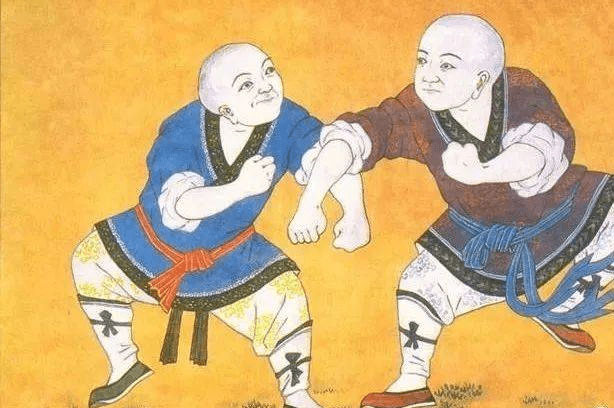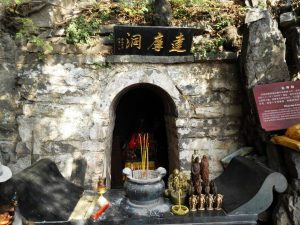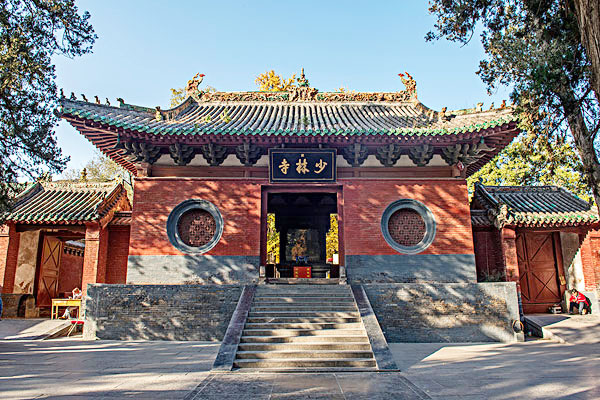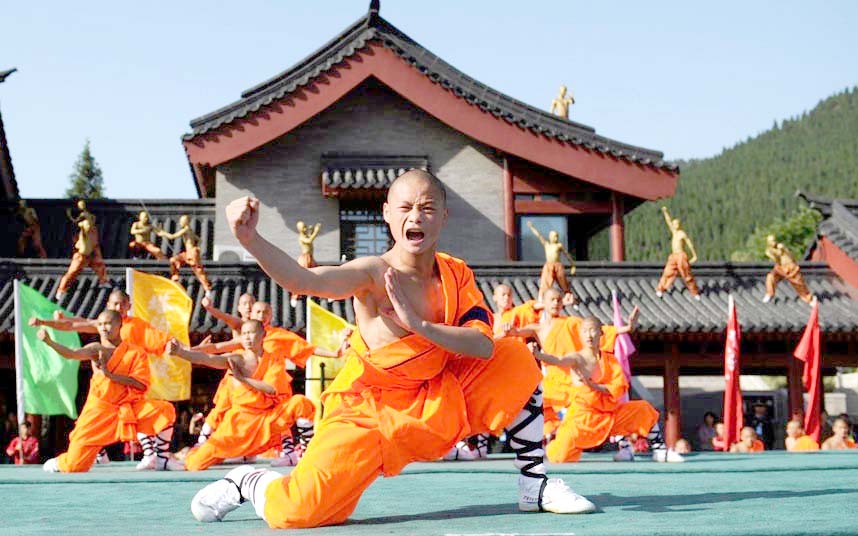There was once a temple in Deng Feng County named Zhu Lin Si (Bamboo Forest Temple) at the base of Wu Ru Peak of Shao Shi Hills in the foothills of Mount Song in central China.
In the temple lived an old monk named Dao Ji, who wanted very much to become an immortal but he could not find the elixir of life. There was in the temple a 10-year-old monk called Dao Lan, who gathered firewood every day in the mountains.
There, he became friends with a boy called Ginseng Baby, who helped him with wood-cutting.
The old monk learned about this and suspected that Ginseng Baby might be the elixir ginseng incarnate which he was searching for.
The plant was believed to blossom only once every 3,000 years and take another thousand years to fruit.

One morning, the old monk followed Dao Lan into the mountains and hid behind a huge rock. As Dao Lan and Ginseng Baby were frolicking, he sprang out and grabbed hold of Ginseng Baby, who struggled free and vanished under the cliffs.
But the old man refused to give up and he started digging. Before long, a plump white ginseng root was unearthed.
Very pleased, the monk returned to the temple with the ginseng root and brewed it in a pot of water. In no time, the whole temple was permeated with the aroma of ginseng.
Just then a visitor came to see the monk. After the guest left, Dao Ji came back to find that the ginseng had been eaten up by other monks, with only some decoction left in the pot.
Furious, the old monk took up the pot to drink the decoction. But Dao Lan, who hated the monk for the loss of Ginseng Baby, snatched the pot and ran off. With the old monk at his heels, Dao Lan slipped and the decoction splashed all over him.

At that very moment, a resounding bang was heard and the temple, suffused with a golden glow, began to rise into the sky. The monks who had eaten the ginseng, more than 10 in number, turned into immortal celestial beings while the wicked old monk fell down from the temple in midair.
In commemoration of the vanished temple, people built a new one on its site. Since it was located in the woods at the foot of Shao Shi Hills, it was given the name Shao Lin Temple, lin being the Chinese word for woods.
This tale added a mystic touch to the history of the temple, but in fact, Shao Lin Temple was built in 495 A.D. by Emperor Xiao Wen of the Northern Wei Dynasty (386-534) for the monk Bhadra who had come from the Western Regions to preach Buddhism in China.
More than 30 years later, Bodhidharma, an Indian monk, came to Shao Lin Temple and established Zen Buddhism, zen meaning meditation.
Bodhidharma held that one could achieve sainthood or nirvana only if he spent long periods of time sitting and meditating before the wall, free from all worldly thoughts. This simple way to cultivate mind and body was quickly popularized among the people. Shao Lin Temple has since become a sacred place of Zen Buddhism.
When Bhadra was the abbot at Shao Lin Temple, the monks developed several new sets of Chinese boxing for body-building and self-defense based on boxing arts popular among ordinary folks such as Wuqinxi (Game of Five kinds of Birds and Beasts). The temple also admitted disciples adept in martial arts.

In the city of Luoyang one day, Bhadra saw a young man standing on the wooden fence round a well who managed to kick a shuttle-cock at his back 500 times without a break. It was so difficult and risky since even a single misstep would cause him to fall into the well. Bhadra was so impressed he accepted him as his disciple.
After the institution of Zen Buddhism by Bodhidharma, monks devoted even more time to meditation. However, they found it very hard to sustain for long the strain of their exercise, for meditation slowed down the circulation of blood in the body. To counteract this effect, the monks designed new ways of body-building boxing, which gradually evolved into the unique Shao Lin Boxing.
The monks formed teams of temple guards. Their movements, characterized by agility and suddenness, were like those of a tiger pouncing upon its victim or of an eagle swooping down on its prey. Moving forward or backward, their footsteps were perfectly aligned. They moved like the whirlwind, and when they stood still, they were like piles driven deep into the ground… nothing could budge them.
In the Hall of One Thousand Gods in the temple, one can see even today on the flagstone floor the pits worn by monks of olden days as they trained in martial arts.
Towards the end of the Sui Dynasty (581-618), a group of 13 monks from Shao Lin Temple saved Li Shimin, Duke of Qin. When Li Shimin ascended the throne, Shao Lin Temple was granted a large tract of land and permitted to retain a force of 500 monk-soldiers.
Consequently, the reputation of Shao Lin martial arts spread far and wide and, being constantly improved upon, became in time an important school of martial arts in China. This age-old gongfu for body-building and self-defense has gained widespread influence and now has followers all over the world. — First published in Tulay Fortnightly, Chinese-Filipino Digest 28, no. 5 (August 4-17, 2015): 12.
